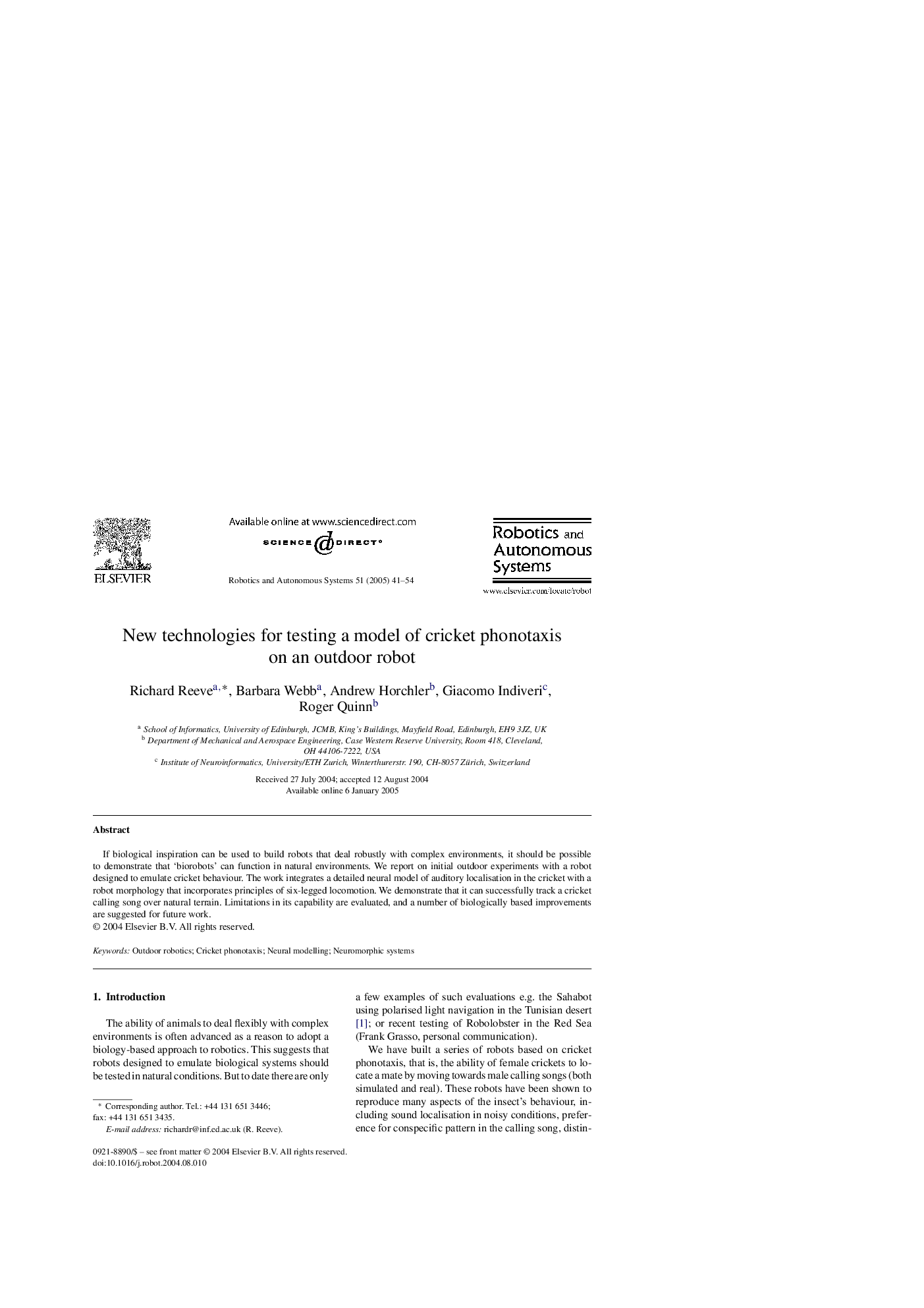| Article ID | Journal | Published Year | Pages | File Type |
|---|---|---|---|---|
| 10327073 | Robotics and Autonomous Systems | 2005 | 14 Pages |
Abstract
If biological inspiration can be used to build robots that deal robustly with complex environments, it should be possible to demonstrate that 'biorobots' can function in natural environments. We report on initial outdoor experiments with a robot designed to emulate cricket behaviour. The work integrates a detailed neural model of auditory localisation in the cricket with a robot morphology that incorporates principles of six-legged locomotion. We demonstrate that it can successfully track a cricket calling song over natural terrain. Limitations in its capability are evaluated, and a number of biologically based improvements are suggested for future work.
Keywords
Related Topics
Physical Sciences and Engineering
Computer Science
Artificial Intelligence
Authors
Richard Reeve, Barbara Webb, Andrew Horchler, Giacomo Indiveri, Roger Quinn,
